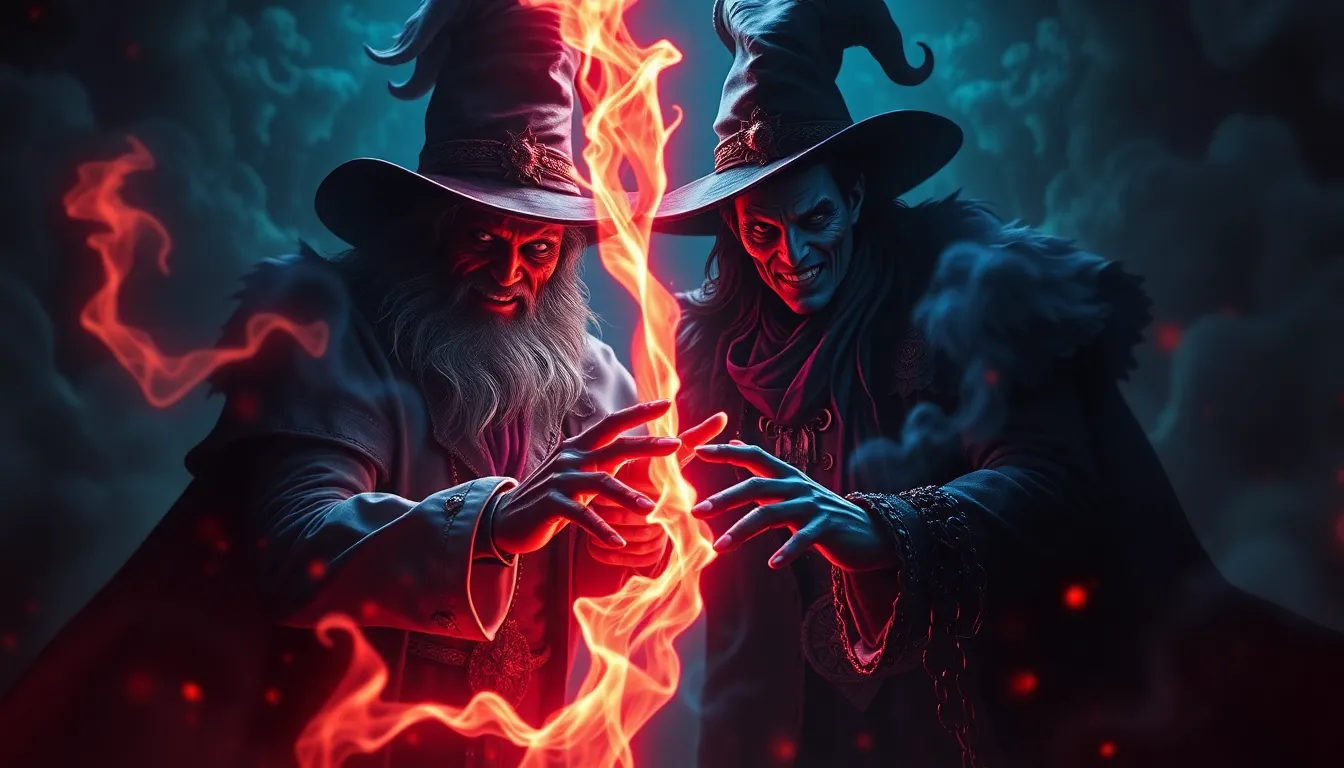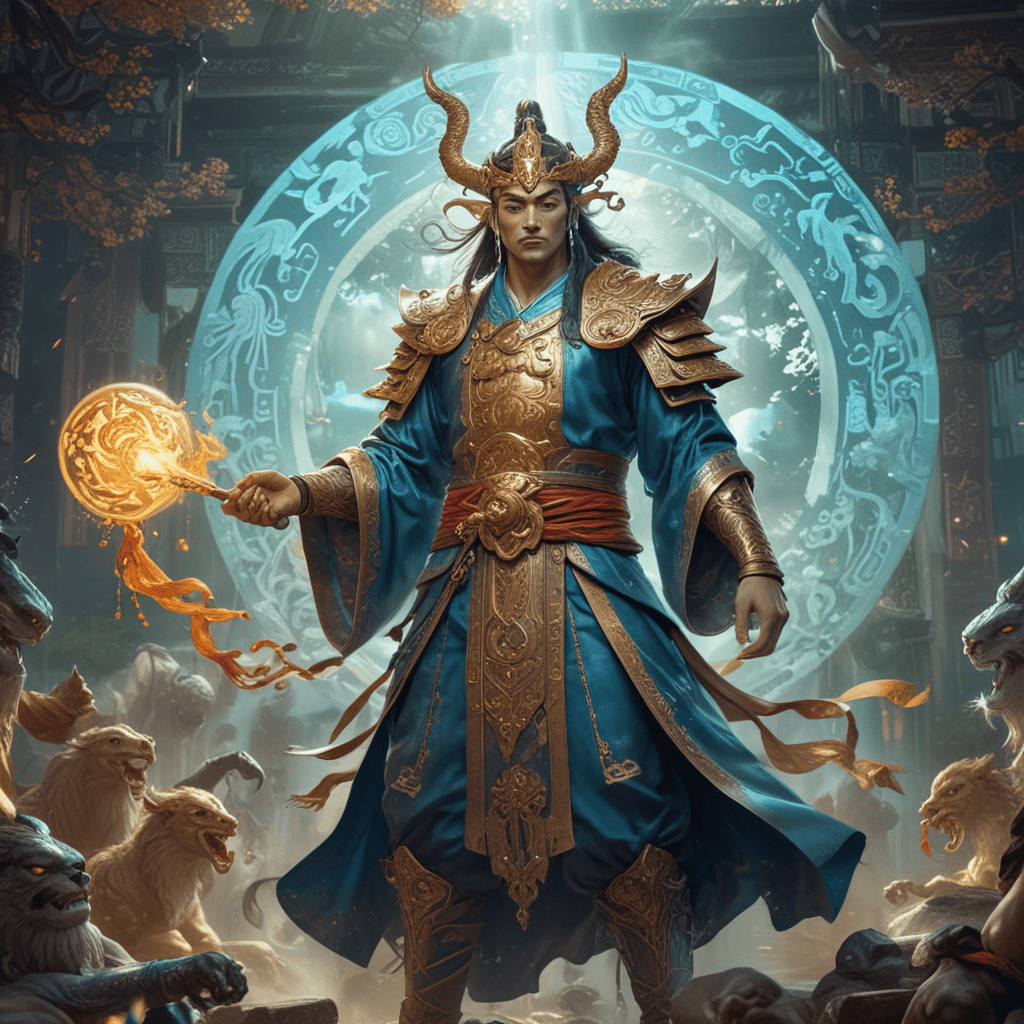I. Introduction
Tricksters have long been a captivating element of folklore and mythology, embodying a complex blend of characteristics that straddle the line between heroism and villainy. These figures are often depicted as cunning, clever, and unpredictable, engaging in antics that challenge social norms and expectations. The duality of trickster characters invites us to examine their roles in stories, where they can serve as both saviors and saboteurs.
The purpose of this article is to explore the intricate complexities of tricksters, delving into how they can be viewed as both heroes and villains depending on the narrative context, cultural background, and societal values at play.
II. Historical Context of Tricksters
A. Tricksters in ancient mythologies
Throughout history, tricksters have appeared in a variety of cultural myths and legends. They often hold a significant place in the narrative structure, serving as catalysts for change and transformation. Here are some examples:
- Native American Traditions: Figures like Coyote and Raven often embody the trickster archetype, using their wits to outsmart others and challenge the status quo.
- African Folklore: Anansi, the spider, is a prominent trickster who uses cleverness to navigate challenges and teach moral lessons.
- European Myths: Characters such as Hermes in Greek mythology and Loki in Norse mythology illustrate the trickster’s role in disrupting order while also facilitating change.
B. Evolution of the trickster archetype through history
The portrayal of tricksters has shifted over time, reflecting changes in societal values and beliefs:
- The trickster was once revered as a cultural hero, embodying the spirit of resistance and innovation.
- In more contemporary narratives, tricksters may be viewed with suspicion, as their actions often blur the lines of morality.
Modern interpretations found in literature and media continue to explore the dual nature of tricksters, offering fresh perspectives on their motivations and actions.
III. Characteristics of Trickster Figures
A. Common traits of tricksters
Tricksters share several key characteristics that define their role in narratives:
- Cunning, intelligence, and resourcefulness: They often rely on their wits to navigate challenges and outsmart opponents.
- Ambiguity and moral flexibility: Tricksters do not adhere strictly to the definitions of good or evil, often acting in ways that defy conventional morality.
B. The role of humor and chaos in trickster narratives
Humor is central to many trickster tales, serving as a tool for critique and commentary on societal norms. The chaos they introduce often leads to a reevaluation of established order, prompting both laughter and reflection.
C. Examples of notable tricksters across cultures
Various cultures celebrate their trickster figures, including:
- Coyote: A Native American trickster known for his cleverness and ability to shape-shift.
- Loki: A Norse god whose mischievous deeds bring both harm and benefit to gods and mortals alike.
- Anansi: The spider from African folklore, often teaching lessons through his clever schemes.
IV. Tricksters as Heroes
A. Acts of rebellion against oppressive systems
Tricksters often embody the spirit of rebellion, using their cunning to challenge unjust authority and oppressive systems. Their actions can inspire change and serve as a voice for the marginalized.
B. Use of wit and cunning to achieve positive outcomes
Through cleverness, tricksters can outsmart powerful adversaries, leading to favorable outcomes for themselves and their communities. This aspect of the trickster archetype highlights their potential as heroes.
C. Case studies of tricksters portrayed as heroes in literature and film
- Loki: While often seen as a villain, Loki’s actions sometimes aid the gods, showcasing his complexity.
- Hermes: The messenger god who uses his intelligence and speed to assist others, embodying the trickster’s positive traits.
V. Tricksters as Villains
A. Manipulation and deceit for personal gain
On the flip side, tricksters can also represent chaos and deceit, using their skills to manipulate others for selfish purposes. This darker side often leads to harm and suffering.
B. Consequences of trickster behavior on communities and individuals
The actions of tricksters, when motivated by personal gain, can disrupt communities and create discord, showcasing the potential negative impact of their cunning.
C. Case studies of tricksters portrayed as villains
- Anansi: In some tales, his trickery leads to dire consequences for his fellow creatures.
- The Joker: A modern trickster figure who embodies chaos and anarchy, often causing destruction in Gotham City.
VI. The Gray Area: Tricksters as Complex Characters
A. The ambiguity of heroism and villainy in trickster narratives
The nature of tricksters often exists in a gray area where their actions cannot be easily classified as purely good or evil. This ambiguity enriches their character development and the stories they inhabit.
B. Psychological depth and motivations of tricksters
Understanding the motivations behind a trickster’s actions can reveal deeper psychological complexities. They often act out of necessity, survival, or a desire for change, complicating their moral standing.
C. The impact of context on the perception of trickster actions
The cultural and social context in which a trickster operates greatly influences how their actions are interpreted—what might be seen as heroic in one setting could be viewed as villainous in another.
VII. Cultural Perspectives on Tricksters
A. Variations in hero-villain dynamics across different cultures
Different cultures interpret the duality of tricksters in unique ways, shaping their narratives around local values and beliefs. This results in a rich tapestry of interpretations that highlight diverse societal norms.
B. The societal implications of trickster figures in various traditions
Tricksters often serve as mirrors to society, reflecting its fears, desires, and contradictions. Their stories can reveal underlying tensions within cultural frameworks.
C. How cultural backgrounds influence the interpretation of trickster roles
Understanding a culture’s history and values can inform how trickster figures are perceived—whether as heroes, villains, or something in between.
VIII. The Impact of Trickster Stories on Society
A. The moral lessons derived from trickster tales
Trickster stories often impart valuable lessons about the nature of deception, the importance of wit, and the consequences of one’s actions. They challenge audiences to think critically about morality and ethics.
B. Tricksters as a reflection of societal norms and values
The narratives surrounding tricksters can provide insights into the values of the society from which they originate, illustrating the complexities of human behavior and societal expectations.
C. The relevance of trickster figures in contemporary culture
In today’s world, trickster figures continue to resonate, appearing in literature, film, and art as symbols of resistance, creativity, and the human condition. Their enduring appeal lies in their ability to navigate the complexities of life, making them timeless characters in storytelling.



